Reliability Analysis and Parameter Selection for IoT Communication Based on Deep Learning
Abstract
1. Introduction
2. Literature Review
3. Building an Internet Communication Model Based on Deep Learning
3.1. Deep Learning Network
3.2. Extracting Signal Features
3.3. IoT Communication Model
4. Selection of Communication Model Reliability Parameters
4.1. Establishment of Parameter System
4.2. Indicator Evaluation
5. Reliability Analysis of IoT Communication Model
5.1. Parameter System
5.2. Parameter Index Weights
5.3. Feature Dimension
5.4. Network Management Dimensions
5.4.1. Prediction Reliability
5.4.2. Balanced Reliability
5.4.3. Coverage Reliability
5.5. Communication Operation Dimensions
5.5.1. Fault Repair
5.5.2. Transmission Reliability
5.5.3. Data Loss
6. Findings
7. Conclusions
- (1)
- After reducing data dimensionality through the communication model constructed in this article, a two-dimensional feature plane can be obtained and the running data can be distinguished on the reliability feature plane.
- (2)
- Our IoT communication model, which can quickly and efficiently switch between training and testing sets, converges to 0 when the signal-to-noise ratio is 90 dB. The success rate of cross zone switching is greater than 99.6%, meeting the requirement of current wireless communication system technologies (success rate ≥ 99.5%).
- (3)
- When the predicted noise transmission rate is greater than 6 dBm and greater than 7 dBm, the reliability is greater than 98.0% and less than 99.5%, meeting the communication reliability requirements.
Author Contributions
Funding
Institutional Review Board Statement
Informed Consent Statement
Data Availability Statement
Conflicts of Interest
References
- Uzoka, A.; Cadet, E.; Ojukwu, P.U. The role of telecommunications in enabling Internet of Things (IoT) connectivity and applications. Compr. Res. Rev. Sci. Technol. 2024, 2, 055–073. [Google Scholar] [CrossRef]
- Allioui, H.; Mourdi, Y. Exploring the full potentials of IoT for better financial growth and stability: A comprehensive survey. Sensors 2023, 23, 8015. [Google Scholar] [CrossRef] [PubMed]
- Shen, M.; Ye, K.; Liu, X.; Zhu, L.; Kang, J.; Yu, S.; Li, Q.; Xu, K. Machine learning-powered encrypted network traffic analysis: A comprehensive survey. IEEE Commun. Surv. Tutor. 2022, 25, 791–824. [Google Scholar] [CrossRef]
- Illi, E.; Qaraqe, M.; Althunibat, S.; Alhasanat, A.; Alsafasfeh, M.; De Ree, M.; Al-Kuwari, S. Physical layer security for authentication, confidentiality, and malicious node detection: A paradigm shift in securing IoT networks. IEEE Commun. Surv. Tutor. 2023, 26, 347–388. [Google Scholar] [CrossRef]
- Macriga, G.A.; Fathila, M.F.; Helen, A.; Rijwana, R.; Syed, H.H. Automatic identification and monitoring system for fisherman based on narrowband and internet of things communications systems. SSRN Electron. J. 2019, 6, 303–307. [Google Scholar]
- Ramadhan, A.J. Smart glasshouse system supported by global system for mobile communications and internet of things: Case study: Tomato plant. J. Eng. Sci. Technol. 2020, 15, 3067–3081. [Google Scholar]
- Roseela, J.A.; Godhavari, T.; Narayanan, R.M.; Madhuri, P.L. Design and deployment of IoT based underwater wireless communication system using electronic sensors and materials. Mater. Today Proc. 2021, 45, 6229–6233. [Google Scholar] [CrossRef]
- Dong, N. A malicious intrusion detection model of network communication in cloud data center. J. Interconnect. Netw. 2022, 22, 2141023. [Google Scholar] [CrossRef]
- Agrawal, N.K.; Alam, S.; Raghav, H. Osi model: The basics structure of network communication. Int. J. Recent Technol. Eng. 2021, 9, 66–69. [Google Scholar] [CrossRef]
- Mahler, T.; Kowalewski, J.; Nub, B.; Richt, C.; Mayer, J.; Zwick, T. Channel measurement based antenna synthesis for mobile automotive mimo communication systems. Prog. Electromagn. Res. B 2017, 72, 1–16. [Google Scholar] [CrossRef]
- Deepa, A.; Marimuthu, C.N. A high speed vlsi architecture of a pipelined reed solomon encoder for data storage in communication systems. Asian J. Res. Soc. Sci. Humanit. 2017, 7, 228–238. [Google Scholar] [CrossRef]
- Samyuel, N.B.; Shimray, B.A. Securing iot device communication against network flow attacks with recursive internetworking architecture (rina)-sciencedirect. ICT Express 2021, 7, 110–114. [Google Scholar] [CrossRef]
- Suma, V. Wearable iot based distributed framework for ubiquitous computing. J. Ubiquitous Comput. Commun. Technol. 2021, 3, 23–32. [Google Scholar] [CrossRef]
- Babu, C.; Kumar, D.D.; Kumar, K.; Reddy, K.J.; Sudha, R. Power monitoring and control system for medium voltage smart grid using iot. IOP Conf. Ser.: Mater. Sci. Eng. 2020, 906, 012007. [Google Scholar] [CrossRef]
- Moriyama, M.; Takizawa, K.; Tezuka, H.; Kojima, F. Experimental evaluation of stbc and cdd for reliable downlink communication. IEICE Commun. Express 2020, 9, 312–317. [Google Scholar] [CrossRef]
- Liaskos, C.; Pyrialakos, G.G.; Pitilakis, A.; Tsioliaridou, A.; Christodoulou, M.; Kantartzis, N.; Ioannidis, S.; Pitsillides, A.; Akyildiz, I.F. Integrating Software-Defined Metasurfaces into Wireless Communication Systems: Design and Prototype Evaluation. In Proceedings of the 2022 IEEE Symposium on Computers and Communications (ISCC), Rhodes, Greece, 30 June–3 July 2022; pp. 1–6. [Google Scholar]
- Kanno, S.; Imaike, T.; Otani, A. Study of radio communication evaluation system using under-sampling. IEEJ Trans. Fundam. Mater. 2018, 138, 180–185. [Google Scholar] [CrossRef]
- Gao, L.; Chen, L.; Yu, F. The research on effectiveness evaluation of mobile broadband wireless communication system. J. Phys. Conf. Ser. 2020, 1634, 012061. [Google Scholar] [CrossRef]
- Zang, Y.; Zhenming, Y.; Xu, K.; Chen, M.; Yang, S.; Chen, H.W. Data-driven fiber model based on the deep neural network with multi-head attention mechanism. Opt. Express 2022, 30, 46626–46648. [Google Scholar] [CrossRef] [PubMed]
- Cha, Y.J.; Choi, W.; Büyüköztürk, O. Deep learning-based crack damage detection using convolutional neural networks. Comput. Aided Civ. Infrastruct. Eng. 2017, 32, 361–378. [Google Scholar] [CrossRef]
- Lee, C.S.; Baughman, D.M.; Lee, A.Y. Deep learning is effective for classifying normal versus age-related macular degeneration oct images. Ophthalmol. Retin. 2017, 1, 322–327. [Google Scholar] [CrossRef] [PubMed]
- Kuang, C. Research on network traffic anomaly detection method based on deep learning. J. Phys. Conf. Ser. 2021, 1861, 012007. [Google Scholar] [CrossRef]
- Li, P.; Cai, J. Research on image recognition from wireless sensor data based on deep learning. CE Ca 2017, 42, 2607–2612. [Google Scholar]
- Zhang, A.; Wang, K.C.; Li, B.; Yang, E.; Dai, X.; Peng, Y.; Fei, Y.; Liu, Y.; Li, J.Q.; Chen, C. Automated pixel-level pavement crack detection on 3d asphalt surfaces using a deep-learning network. Comput.-Aided Civ. Infrastruct. Eng. 2017, 32, 805–819. [Google Scholar] [CrossRef]
- Zhang, L.; Chen, B.; Li, H.; Liu, Y. Deep neural network-based adaptive zero-velocity detection for pedestrian navigation system. Electron. Lett. 2022, 58, 28–31. [Google Scholar] [CrossRef]
- Ilbeigi, M.; Morteza, A.; Ehsani, R. Emergency management in smart cities: Infrastructure-less communication systems. Constr. Res. Congr. 2022, 2022, 263–271. [Google Scholar]
- Kim, W.S.; Kim, J.K.; Park, B.S.; Kwan-Jung Oh Seo, Y.H. Phase-only hologram video compression using a deep neural network for up-scaling and restoration. Appl. Opt. 2022, 61, 10644–10657. [Google Scholar] [CrossRef] [PubMed]
- Du, R.; Magnusson, S.; Fischione, C. The Internet of Things as a deep neural network. IEEE Commun. Mag. 2020, 58, 20–25. [Google Scholar] [CrossRef]
- Uryvsky, L.; Gerstacker, W.; Moshynska, A.; Osypchuk, S.; Yatsyshyn, O. Research and implementation of iot projects for environment parameters and energy resource metering. Inf. Telecommun. Sci. 2020, 1, 27–34. [Google Scholar] [CrossRef]
- Kovtun, V.; Izonin, I.; Gregus, M. Formalization of the metric of parameters for quality evaluation of the subject-system interaction session in the 5g-iot ecosystem. Alex. Eng. J. 2022, 61, 7941–7952. [Google Scholar] [CrossRef]
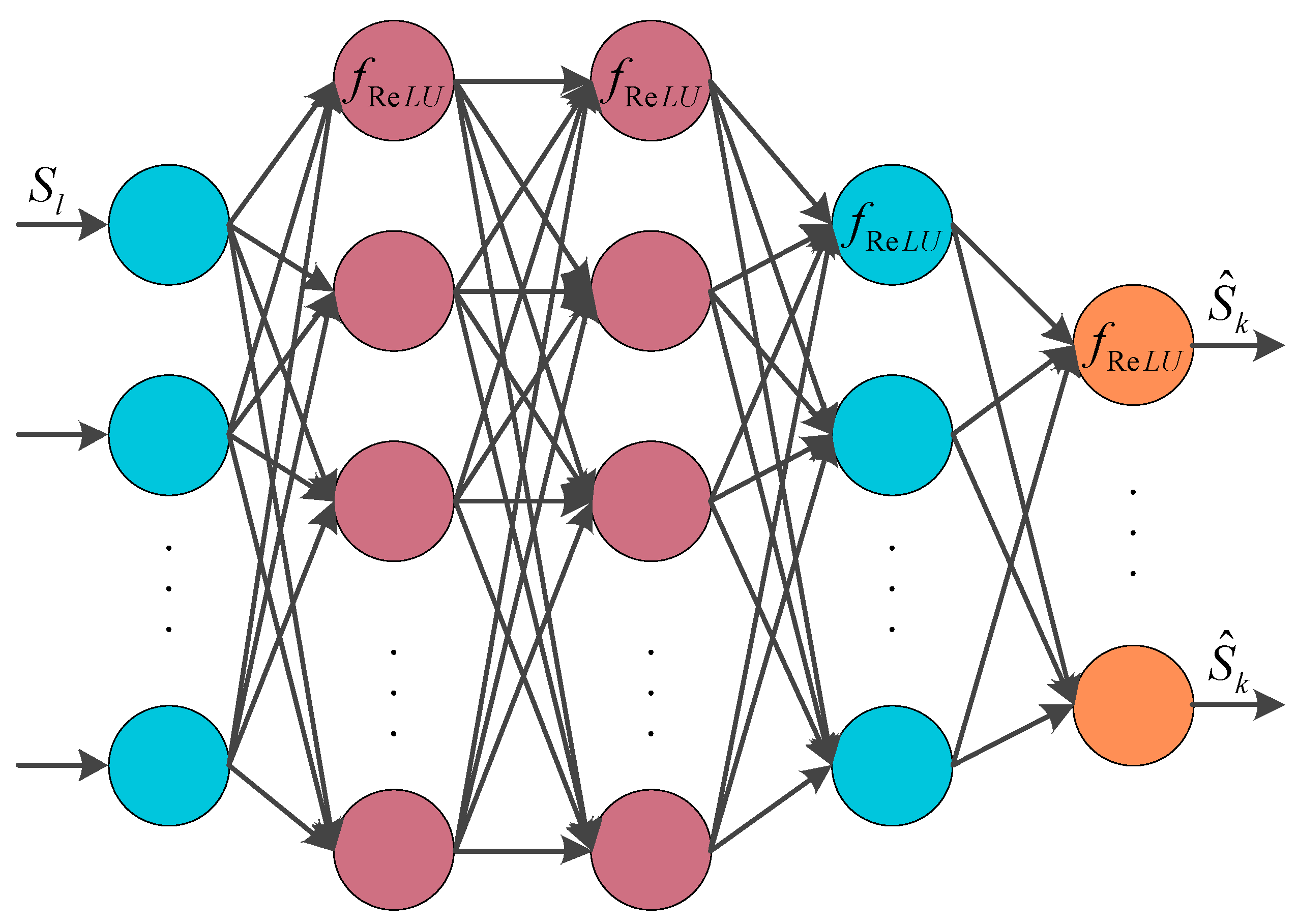
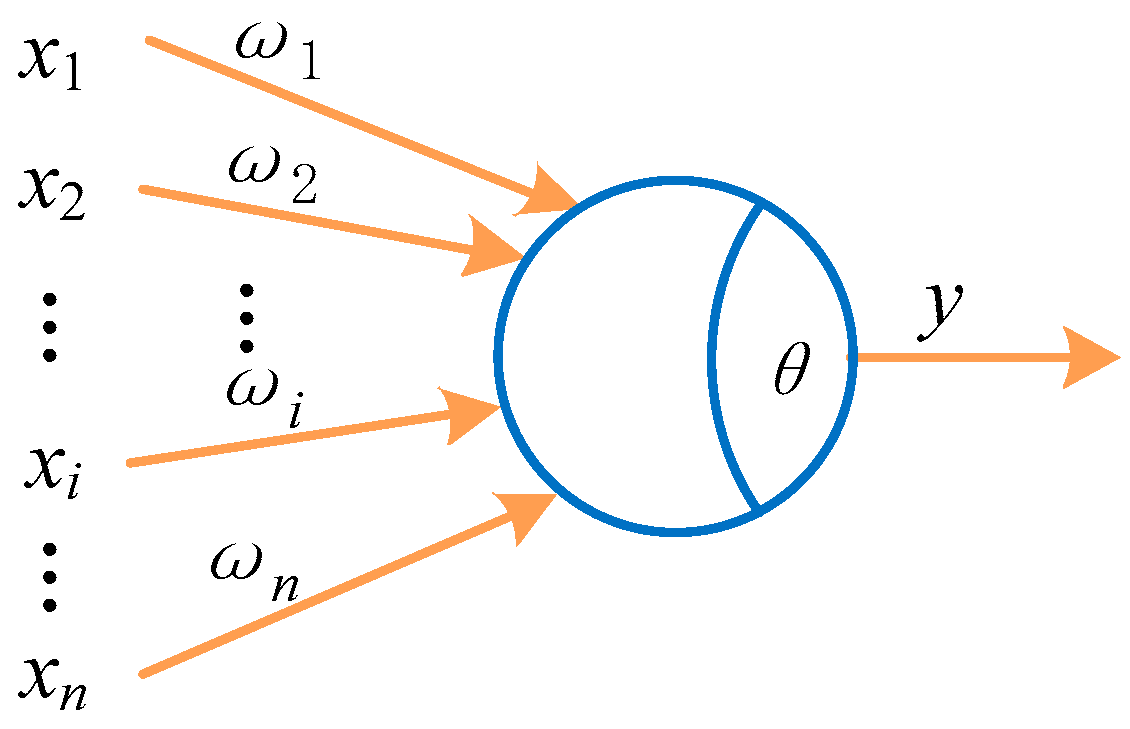
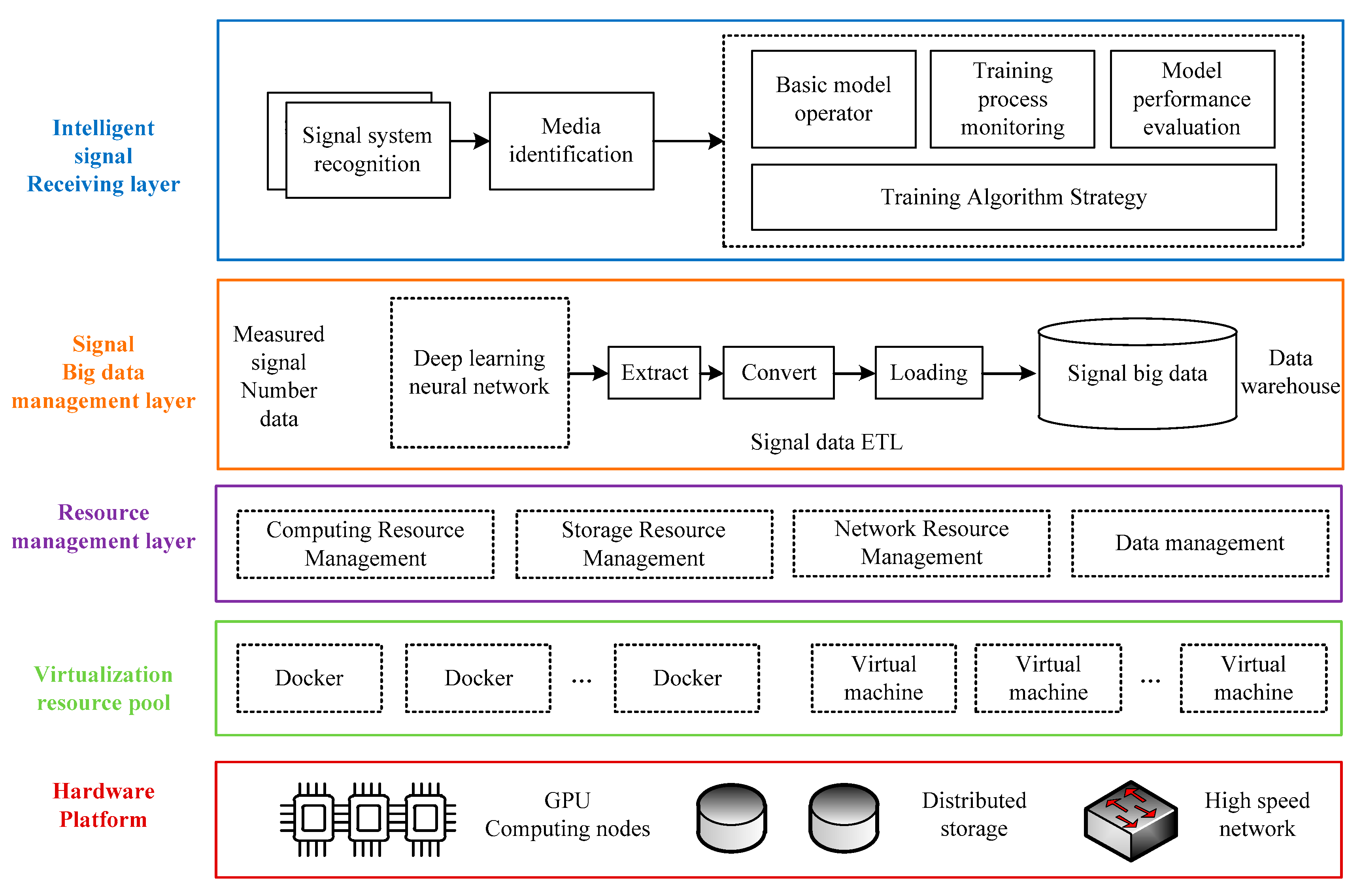
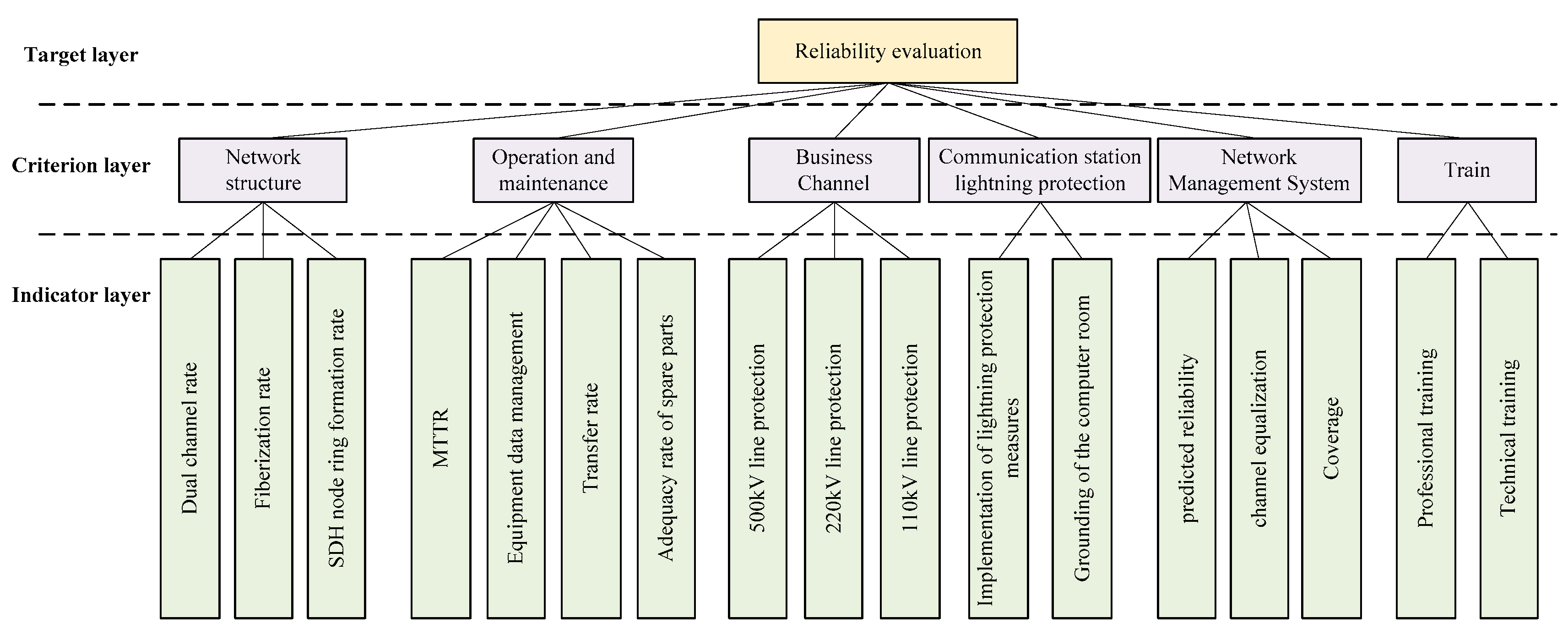
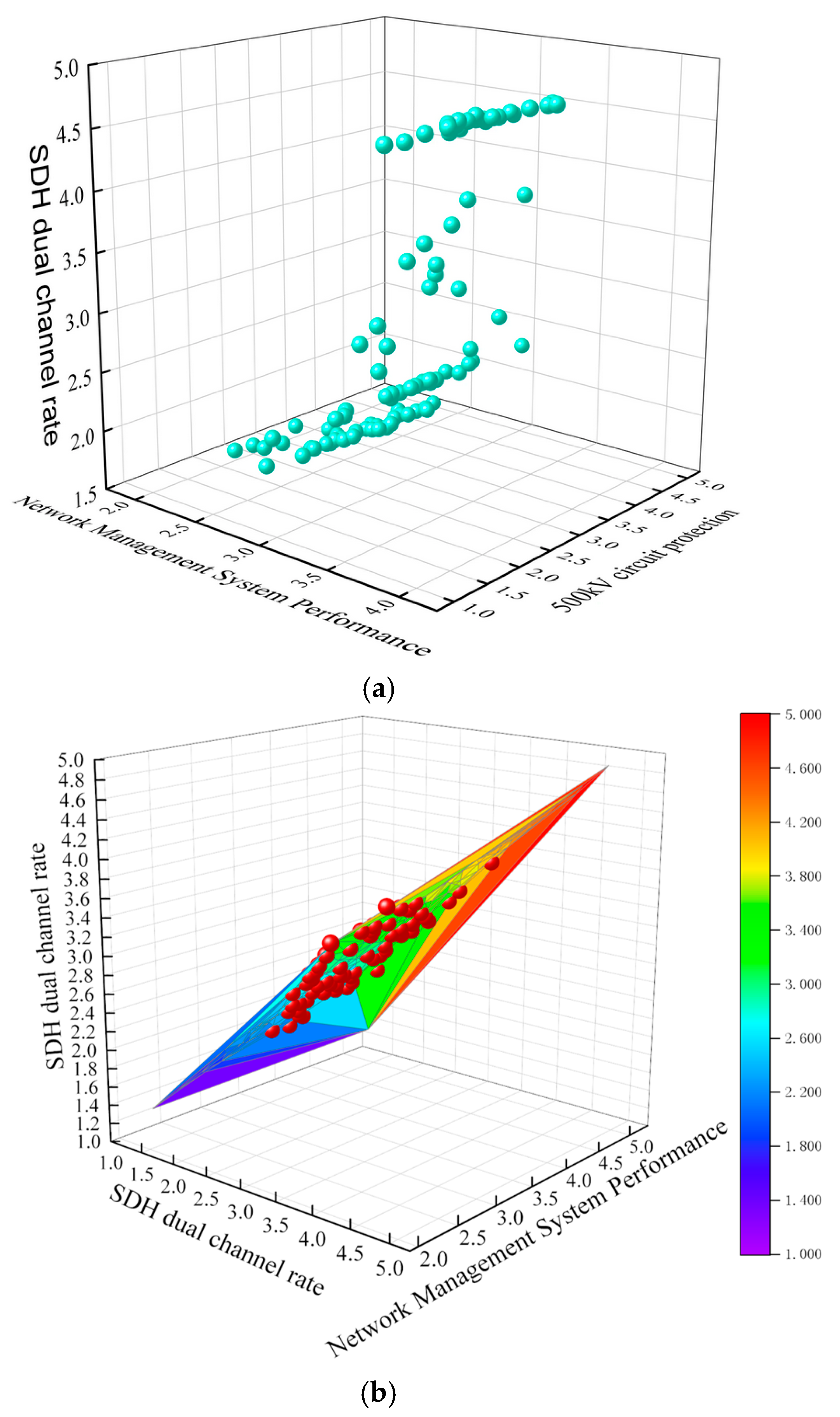
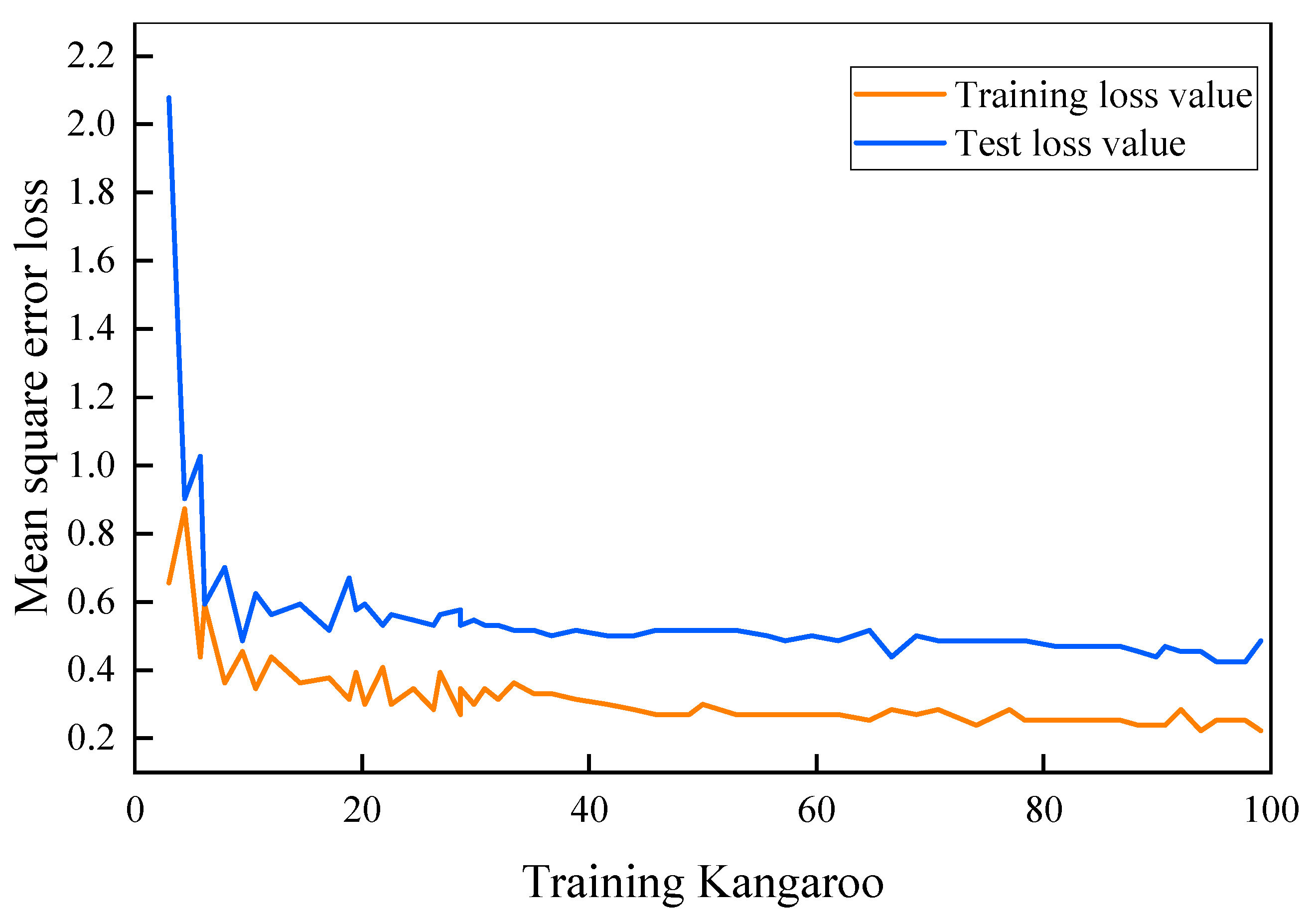
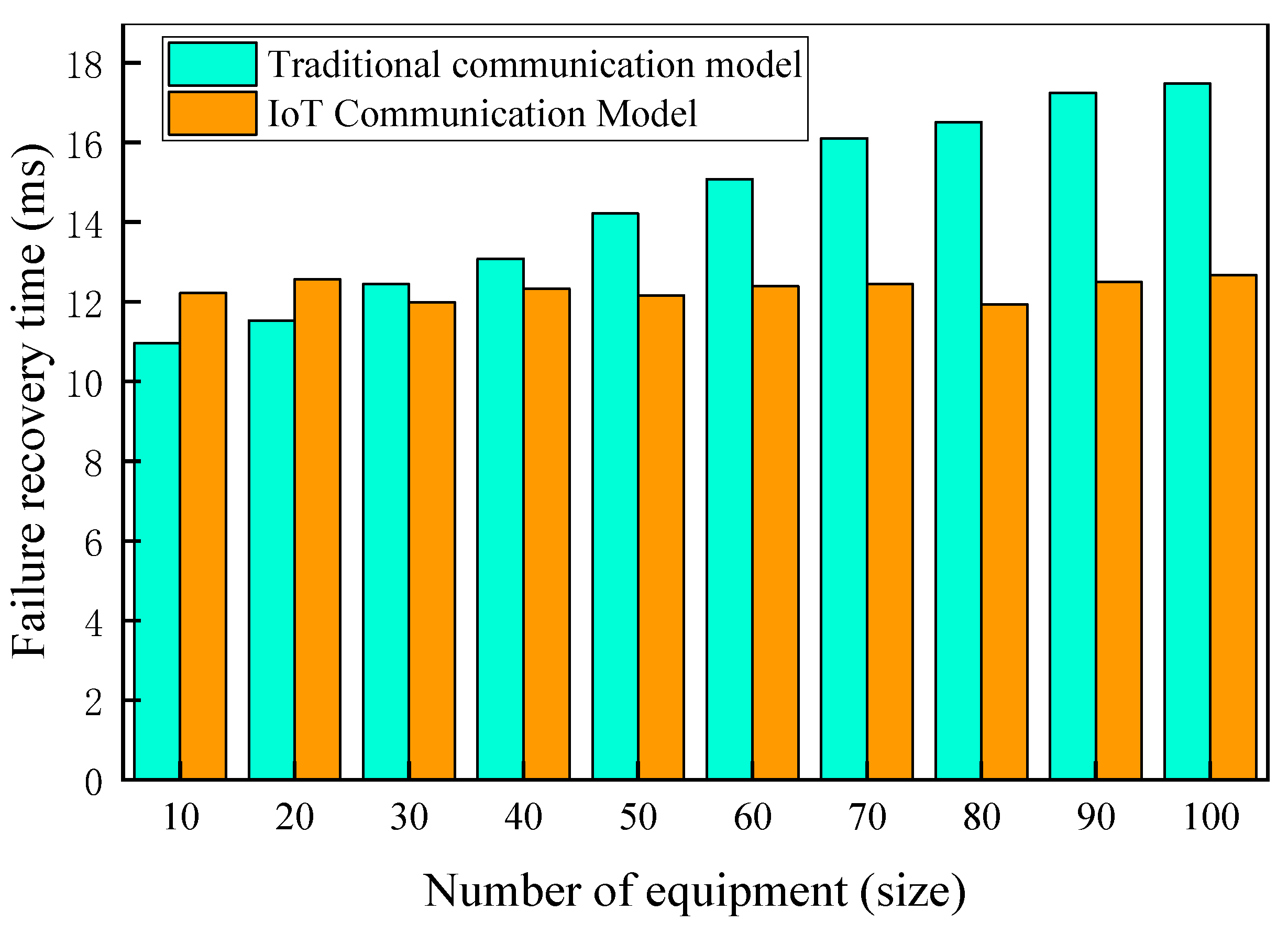
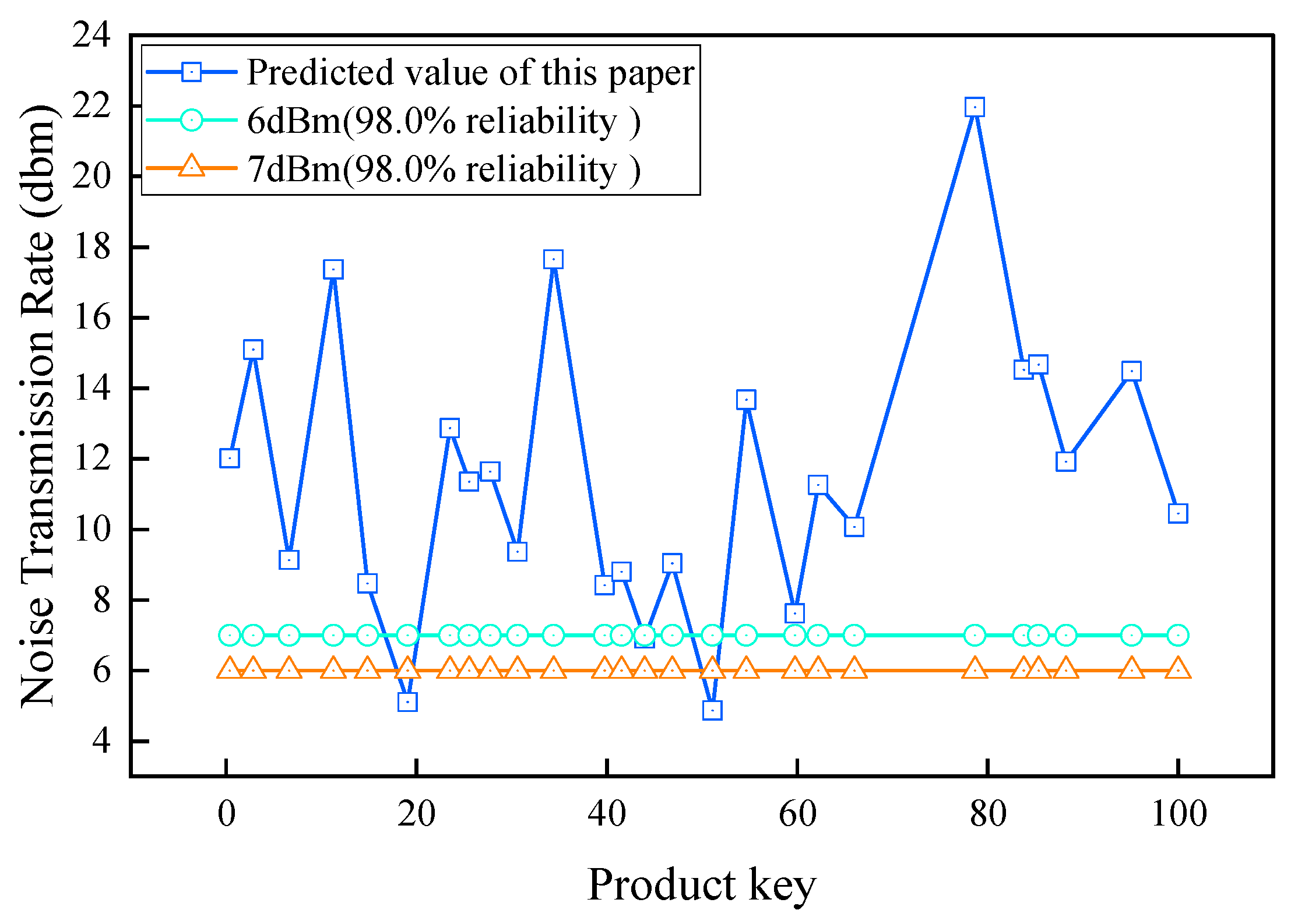
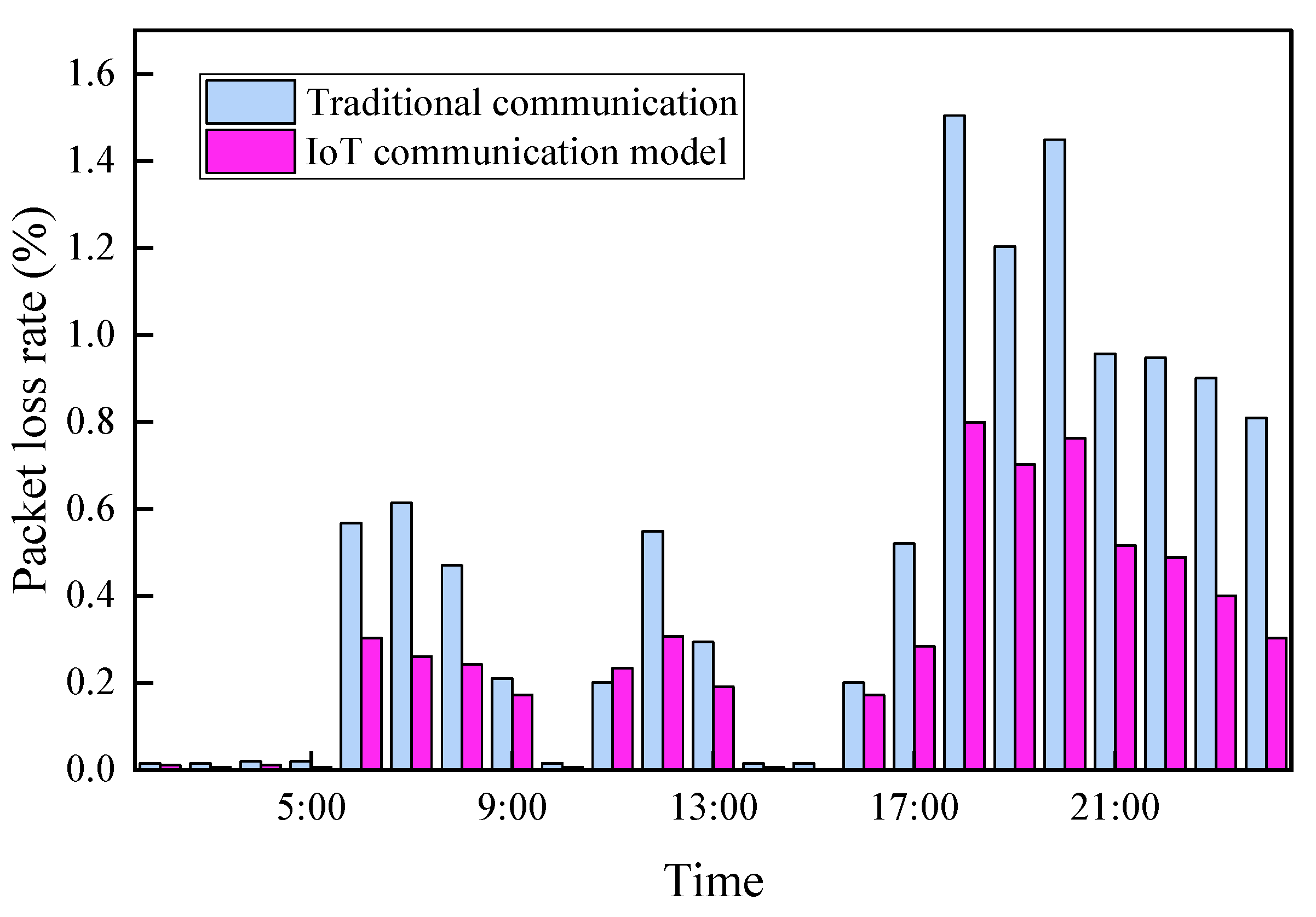
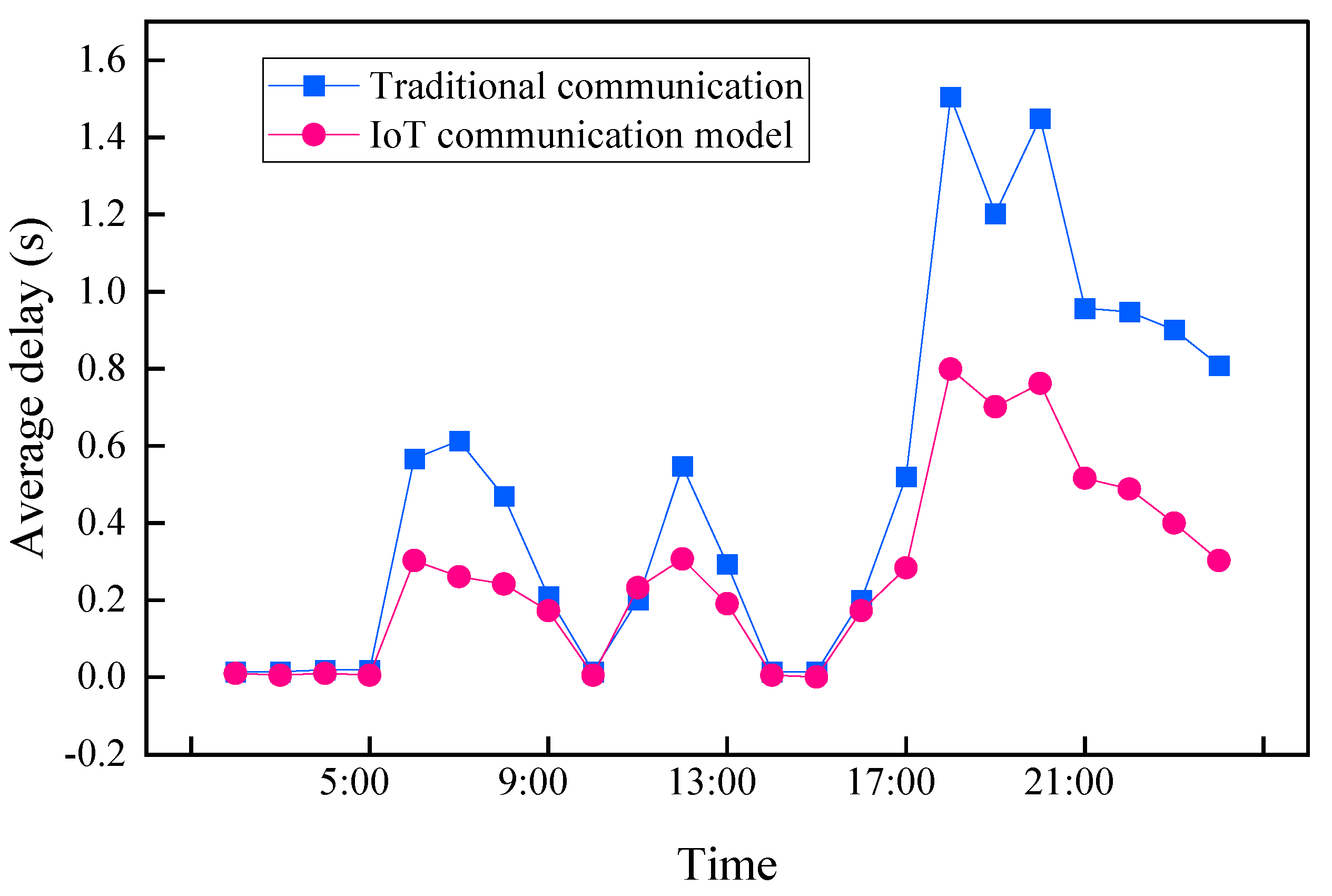
| Standard Voltage | Experimental Group | Relative Error | Control Subjects | Relative Error |
|---|---|---|---|---|
| 3.0 | 3.026 | 0.025% | 4.028 | 3.528% |
| 2.0 | 1.924 | 0.022% | 3.252 | 1.248% |
| 1.0 | 0.983 | 0.016% | 4.032 | 1.625% |
| −1.0 | −1.025 | 0.034% | 3.059 | 2.318% |
| −2.0 | −2.038 | 0.041% | 3.648 | 3.058% |
| −3.0 | −2.989 | 0.023% | 5.628 | 4.629% |
| Criterion Layer | Weight | Target Layer | Weight |
|---|---|---|---|
| Network structure | 0.0484 | Dual-channel rate | 0.0265 |
| Fiber optic rate | 0.0225 | ||
| Ring formation rate of SDH nodes | 0.0287 | ||
| Operation and maintenance | 0.0672 | Breakover time | 0.0598 |
| Device data management | 0.0312 | ||
| Data transfer rate | 0.0569 | ||
| Spare parts adequacy rate | 0.0321 | ||
| Business Channel | 0.0496 | 500 KV Line protection | 0.0415 |
| 220 KV Line protection | 0.0399 | ||
| 110 KV Line protection | 0.0437 | ||
| Communication lightning protection | 0.0258 | Lightning protection measures | 0.0212 |
| Grounding situation | 0.0244 | ||
| Network management | 0.0512 | Predictive reliability | 0.0698 |
| Channel balanced | 0.0599 | ||
| Coverage | 0.0647 | ||
| Training | 0.0241 | Professional training | 0.0203 |
| Technical training | 0.0149 |
| Signal-to-Noise Ratio/db | IoT Communication Model | Traditional Communications Model |
|---|---|---|
| 0 | 0.035 | 0.243 |
| 30 | 0.015 | 0.135 |
| 60 | 0.007 | 0.109 |
| 90 | 0 | 0.088 |
| 120 | 0 | 0.046 |
| 150 | 0 | 0.014 |
| 180 | 0 | 0.011 |
| Scene Type | The Probability of Successful Cross Zone Switching/% | |
|---|---|---|
| IoT Communication Model | Traditional Communication Model | |
| Viaduct | 99.908 | 99.335 |
| Mountain | 99.642 | 99.012 |
| Open space | 99.796 | 99.036 |
| City | 99.620 | 99.498 |
| Countryside | 99.703 | 99.374 |
| Tunnel | 99.612 | 99.005 |
Disclaimer/Publisher’s Note: The statements, opinions and data contained in all publications are solely those of the individual author(s) and contributor(s) and not of MDPI and/or the editor(s). MDPI and/or the editor(s) disclaim responsibility for any injury to people or property resulting from any ideas, methods, instructions or products referred to in the content. |
© 2025 by the authors. Licensee MDPI, Basel, Switzerland. This article is an open access article distributed under the terms and conditions of the Creative Commons Attribution (CC BY) license (https://creativecommons.org/licenses/by/4.0/).
Share and Cite
Pang, B.; Abramov, E.S. Reliability Analysis and Parameter Selection for IoT Communication Based on Deep Learning. Eng 2025, 6, 171. https://doi.org/10.3390/eng6080171
Pang B, Abramov ES. Reliability Analysis and Parameter Selection for IoT Communication Based on Deep Learning. Eng. 2025; 6(8):171. https://doi.org/10.3390/eng6080171
Chicago/Turabian StylePang, Bo, and Evgeny S. Abramov. 2025. "Reliability Analysis and Parameter Selection for IoT Communication Based on Deep Learning" Eng 6, no. 8: 171. https://doi.org/10.3390/eng6080171
APA StylePang, B., & Abramov, E. S. (2025). Reliability Analysis and Parameter Selection for IoT Communication Based on Deep Learning. Eng, 6(8), 171. https://doi.org/10.3390/eng6080171







